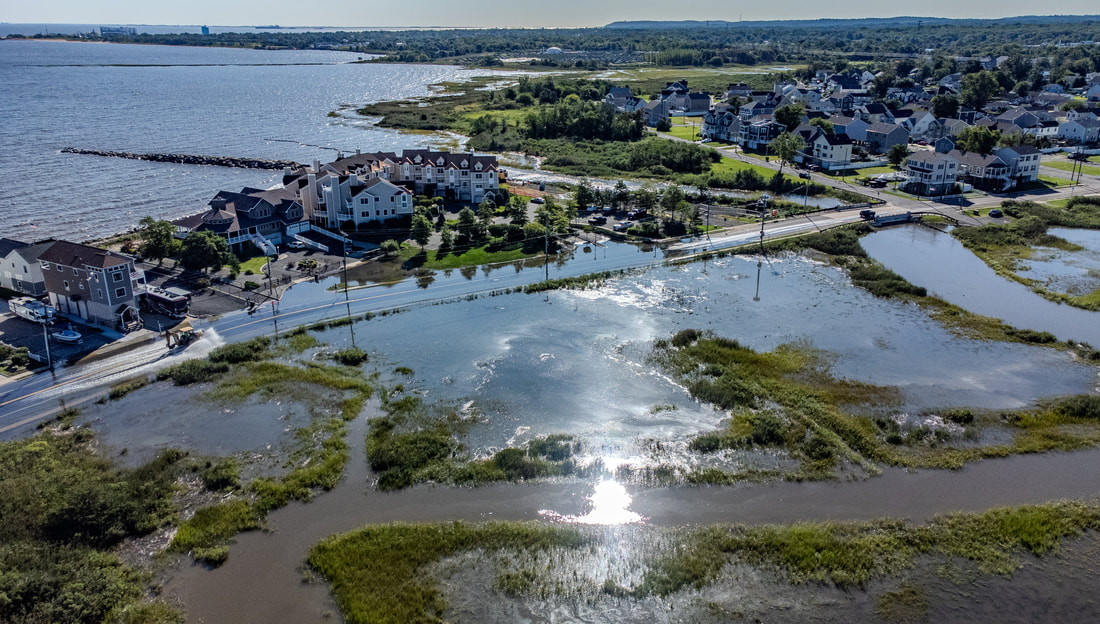|
Land use decisions in New Jersey are complicated now and likely to get even more difficult in the future. That's why the state needs an updated development plan. New Jersey is the most populated state in the country, and it has a long coastline. NJ also has many state and local agencies working on real-world application of regulations and standards governing land use. All of that adds additional issues to balancing development priorities, which include affordable housing, urbanization, preservation of open space and natural habitats, economic development, and rising sea levels. While sea levels are rising around the globe, they are rising faster than average along the New Jersey coast thanks to things like subsidence, or the settling of the earth after groundwater is removed, and isostatic rebound, when melting polar ice reduces the amount of weight on certain parts of the earth’s tectonic plates. These factors create a see-saw effect, which lowers the ground elevation in places like New Jersey and raises it in places like Northern Canada. The net result is we’re losing marshland and increasing the amount of flood-prone areas, which means where we build is critical for the safety of humans and wildlife alike. Last but not least, NJ is on track to be the first state to reach "build out", meaning that every available parcel of land may soon be either developed or preserved. That's where the New Jersey State Development and Redevelopment Plan comes in, as a coordinator of all of the pieces that go into creation of healthy, prosperous, and resilient communities in the state. Work is currently underway to update that plan.
Officially known as the State Plan, this framework could play a pivotal role in coordinating land use planning across NJ's ever-changing landscape to create a sustainable future. However, the first State Plan was legislated nearly 40 years ago, and the current plan was adopted in 2001. Much has changed since then, like increases in precipitation trends, many major storm events (including hurricanes Sandy and Ida), extreme heat waves, and more frequent coastal flooding. These changes do not affect everyone equally. Studies show that people living in poor communities and People of Color are disproportionately impacted by issues related to climate change. Yet the current state plan does not consider equity or climate change, meaning that updates to the 2001 version of the plan are sorely needed. The State Plan also has to be coordinated with the competing priorities in NJ's current coastal management rules, which include the Coastal Area Facility Review Act or CAFRA and the Tidal Wetlands Act. Among other things, these rules are supposed to “encourage development of compatible land uses” in the coastal area while protecting “the most ecologically sensitive and fragile areas from inappropriate development”. The coastal management rules attempt to do this by designating land into five separate planning areas, ranging from Urban Centers, which can be up to 90% impervious or built space, to Coastal Environmentally Sensitive Planning Areas, which cannot have more than 5% of the land paved or built on. These planning areas are intended to be closely coordinated with the State Plan and reflect decisions made by the State Planning Commission during the development of the State Plan. As a result, the State Plan has the potential to result in an increase in the allowed development in coastal areas that should be protected by expanding designated growth zones or to protect climate vulnerable and environmentally sensitive areas and communities by designating them for environmental protection. With all of these entangled priorities, it is extremely important to pay attention to what is being proposed for the State Plan and to tell the State Planning Commission that you want to see the coast protected from harm. The draft of the updated state plan is expected to be released in May 2024, and we will keep you posted on what’s in it and how you can get involved.
James Gater
4/27/2024 09:38:36 am
Very interested in plans to protect our NJ coast line. Comments are closed.
|
Archives
July 2024
Categories
All
|


